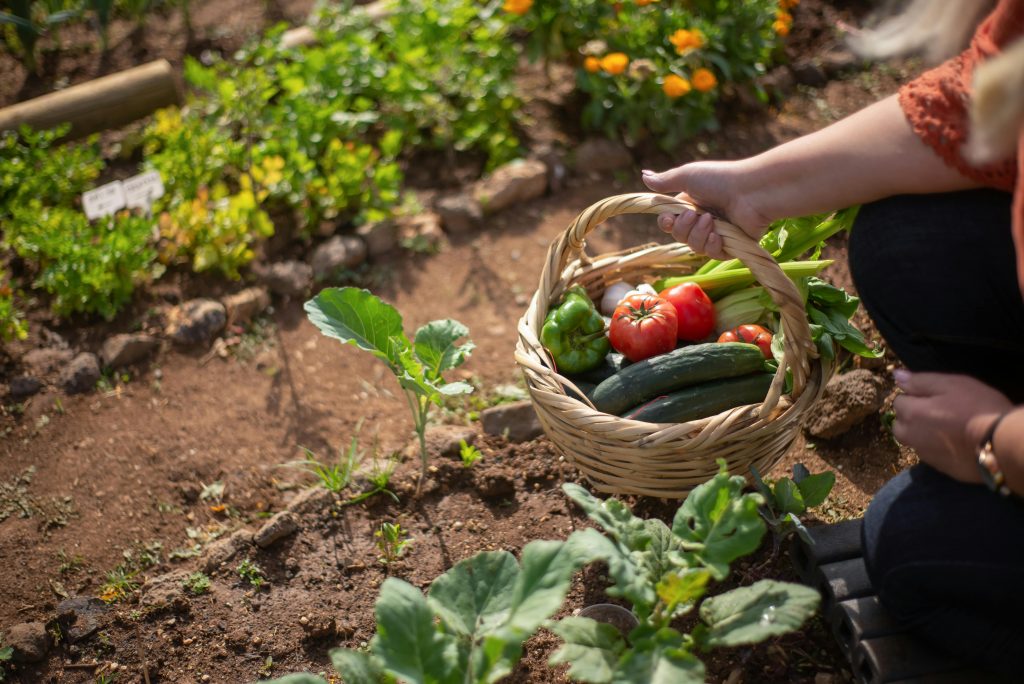- Select plants suitable for your climate and opt for high-yield, space-saving varieties for small gardens.
- Utilize organic seeds to avoid synthetic treatments, enhancing soil health and garden biodiversity.
- Space plants properly and use vertical gardening techniques to maximize yield in limited space.
- Fertilize wisely with organic, chemical, or slow-release options, and ensure consistent watering for robust growth.
Growing your own vegetables can be a rewarding experience, but sometimes, it can be frustrating when you don’t see the yields you were hoping for. Whether you have a small garden plot or just a few containers on your balcony, there are ways to maximize your harvest and produce better yields. This blog will discuss essential tips to help you get the most out of your small vegetable garden.
Choose the Right Plants
When planning your small vegetable garden, it’s essential to choose plants that are well-suited to your climate and growing conditions. Some vegetables thrive in cool weather, while others prefer hot and sunny conditions. Research which plants are best for your area and select varieties that are known for high yields. Additionally, consider planting compact or dwarf varieties of vegetables that take up less space but still produce a good harvest.
Use Organic Seeds
Using organic seeds is another essential tip for maximizing your small vegetable garden’s yield. Organic seeds are grown without the use of synthetic pesticides, herbicides, or fertilizers, which can negatively impact plant growth and soil health. These seeds are also free from genetic modification and can help maintain biodiversity in your garden.
Proper Spacing
One common mistake many gardeners make is not giving their plants enough space to grow. Crowded plants can compete for nutrients and sunlight, leading to stunted growth and lower yields. Be sure to follow spacing recommendations on seed packets or plant tags when planting your vegetables. If space is limited in your garden, consider using vertical gardening techniques such as trellises or stakes to grow vining crops like tomatoes or cucumbers upwards instead of outwards.
Fertilize Regularly
Vegetables are heavy feeders and require regular fertilization to support healthy growth and high yields. The type of fertilizer you use will depend on your soil’s nutrient levels and the specific needs of your plants. Here are four common types of fertilizers and their uses:
Organic Fertilizer
Made from natural materials like animal manure or seaweed, organic fertilizers provide a balanced mix of nutrients and are safe for both plants and the environment. They can also improve soil structure and support beneficial microorganisms.
Chemical Fertilizer
Also known as synthetic fertilizers, these are made from chemical compounds that provide a quick boost of nutrients to plants. While they can produce impressive yields, overuse of chemical fertilizers can lead to nutrient imbalances and harm beneficial soil organisms.
Slow-Release Fertilizer
As the name suggests, this type of fertilizer releases nutrients slowly over time, providing a steady supply to plants. This can help prevent nutrient leaching and reduce the risk of over-fertilization.
Liquid Fertilizer
Liquid fertilizers are made from concentrated solutions that are mixed with water and applied directly to plant roots or foliage. They are fast-acting and can be a convenient option for quick nutrient boosts, but they may need to be used more frequently than other types of fertilizers.
Whichever type of fertilizer you choose, it’s essential to follow the recommended application rates and schedule. Too much fertilizer can damage plants and the environment, while too little can result in stunted growth and low yields.
Water Consistently
Consistent watering is crucial for healthy plant growth and good yields in your vegetable garden. Most vegetables require one inch of water weekly, either through rainfall or irrigation. Use a soaker hose or drip irrigation system to deliver water directly to the base of your plants without wasting water through evaporation or runoff. Avoid overhead watering methods like sprinklers, which can lead to disease issues by wetting the foliage of your plants.
Practice Crop Rotation
Rotating crops yearly is a critical practice that helps prevent soil-borne diseases and nutrient depletion in your small vegetable garden. Avoid planting the same family of vegetables in the same location year after year, as this can lead to a buildup of pests and diseases in the soil. Instead, rotate crops so that different types of vegetables are grown in each bed each season. This will help maintain soil health and fertility over time, resulting in better yields from your garden.
Cultivating your own vegetables can produce substantial rewards, even in a small space. By choosing the right plants, using organic seeds, spacing correctly, fertilizing appropriately, watering consistently, and practicing crop rotation, you can maximize your garden’s productivity and enjoy a bountiful harvest. These strategies ensure that every square inch of your garden is optimized for success, making your gardening journey both enjoyable and fruitful.



